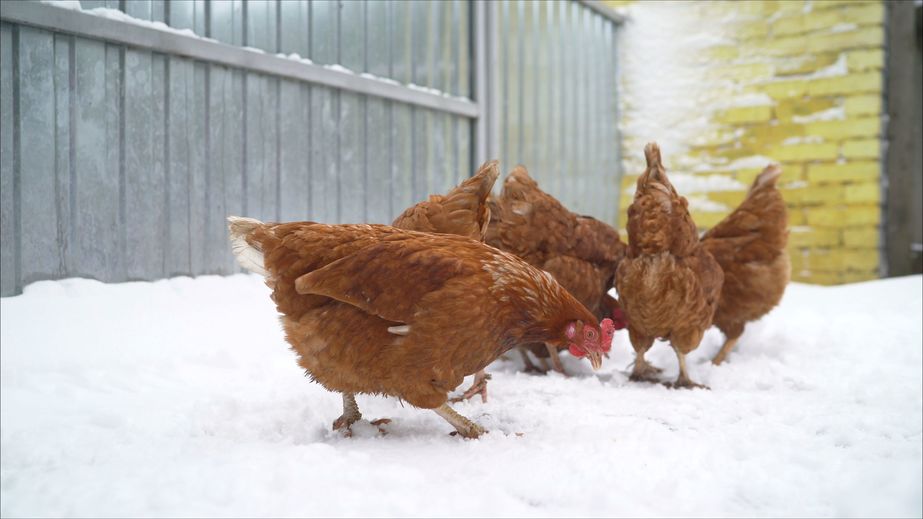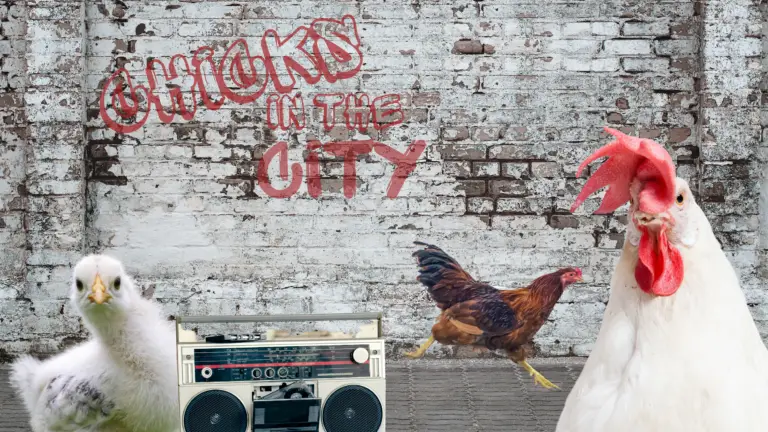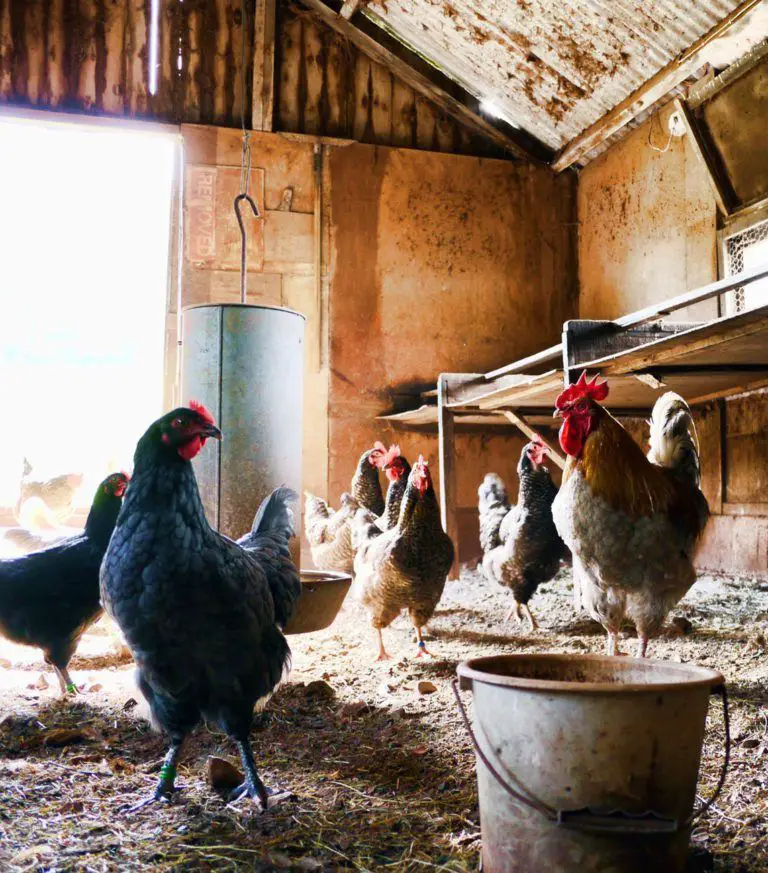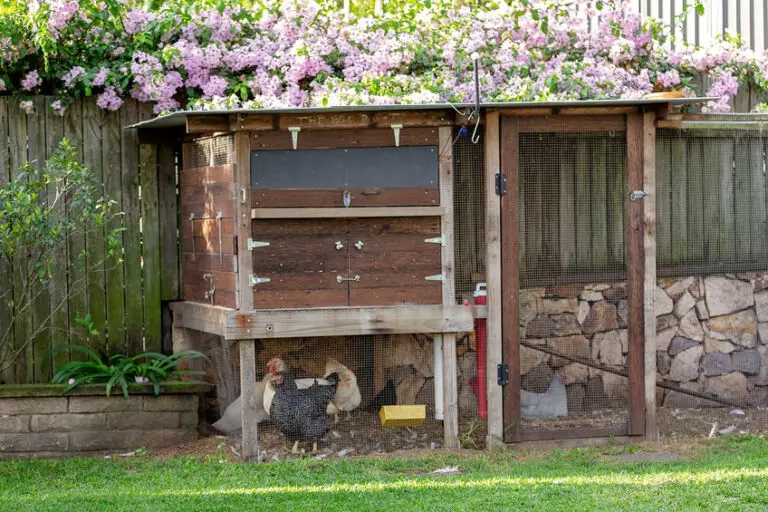8 Ways To Winterize Your Chicken Coop And Run
Before the colder months creep on in, winterizing your chicken coop and run should be on the top of your list to do. Our chickens are more than backyard birds; they are pets and part of the family. We are going to show you how to keep them warm in harsh, frigid winter conditions.
Can Chickens Freeze To Death?
Chickens, like any other animal, can freeze to death. Unlike what you may read online about the fact that chickens produce ample heat from their feathers, they need protection. They can succumb to frostbite and elements such as bone-chilling winds and dangerous temperatures.
Protecting your flock should always begin with selecting cold-hardy breeds, especially if you live in a region where winters are brutal. Additionally, there are things you can do to prepare your coop and run for winter.
Let’s take a look at eight ways to winterize your chicken coop and run!

#1: Inspect And Repair
Before cold temperatures set in, make it an annual “to do” item to winterize your coop and run. The first step in winterizing is doing a thorough inspection of the coop’s interior and exterior. Look for gaps that drafts can penetrate through. Sealing those gaps with spray foam or caulking adequately prevents cold air from getting in.
Check your coop roof for any leaks or rotted wood and repair/replace as needed. The last thing you want in the winter is moisture building up in your coop.
Next, put yourself in the shoes of a predator and check for any openings that can be breached. Predators become a bit more problematic in the winter because of potential prey retreating to warm shelters, causing the food supply in the wild more challenging to attain.
For more information on predator control, see this article.
#2: Insulate Like Crazy!
Insulation is perhaps the most crucial component of keeping your chickens warm in the winter. Placing insulating foam board inside the coop is a cheap way to insulate. It helps to retain heat and keep the cold out. Don’t be surprised if you discover your chickens are pecking at the foam boards because they probably will.
Trapping heat over your roosting posts helps to keep your chickens warm. You can do this by constructing a heat-hood (just like a vent-a-hood over your stove) and place it directly above the roosting area.
Don’t forget that your coop needs ventilation. Leave an area at the top of your coop to allow trapped air to escape. For more on ventilation, read this post.
#3: Install Wind Barriers
The harsh, frigid winter winds are one of the leading causes of frostbite and loss of body warmth. Installing wind barriers around your coop and run helps reduce frostbite and keep your chickens a bit warmer.
A few things you can use as wind barriers:
- Corrugated plastic
- Heavy-duty tarps
- Heavy painter’s plastic tarping
- Plywood
#4: Prevent Moisture In Coop
Moisture buildup in a coop is dangerous. This can be caused by having a waterer inside the coop or too many droppings that have not been cleaned up. Fungus, mold, and ammonia thrive in damp conditions, all of which cause disease or death in chickens.
So, how do you keep your coop dry in the winter?
- Keep your waterer out in the run area. Changing the water several times a day is necessary because it will freeze unless you have a heated waterer. Or, you can buy a de-icer for your tank to make life a bit easier!
- Opt for sand as bedding rather than straw. Many people use the deep litter method (straw) for winter. Unfortunately, this method can contribute to dampness and ammonia buildup unless you are stringent in keeping it maintained and clean. Sand absorbs moisture from droppings and also provides insulation on the floor of your coop and run. Wood pellets are another excellent option.
- If you don’t like the deep litter method, consider using trays/boards to collect droppings. Simply remove them for easy cleaning!
#5: Prevent Frostbite
Chickens can quickly get frostbite on their combs, wattles, and feet. Plan ahead and purchase a protectant to use when temperatures drop to freezing. Wattles are vulnerable to frostbite because when your chickens drink water, the wattles become wet. By applying a balm/protectant, a barrier between the wattle and water forms, adding a protective layer against frostbite.
Be sure to check your chicken’s combs, wattles, and feet daily during winter for any signs of frostbite.
Balms/Salves For Frostbite Protectant (combs, wattles, feet)
- Bag Balm for Pets
- Vaseline
- Burt’s Bees Beeswax
- Musher’s Secret
#6: Have A Backup Plan For Extreme Conditions
If you have an impending Nor’Easter, Blizzard, or extreme dip in temperatures, you should always have a “Plan B” to be able to house your chickens in a warmer area such as your garage, basement, or indoor area.
Chickens with frostbite may need a warmer place to recover in. In such cases, having a pop-up tent, pet carrier, pet crate, or kennel on hand to use in emergencies is ideal.
#7: Heating Options
You can provide heat in your chicken coop with the right type of heat. The only kind of heat we recommend using is radiant heaters. Bulbs, lamps, space heaters, etc., are hazardous and can cause fires. Using radiator heaters or a Cozy Coop Radiant Heat/Convection Heater Panel is best.
By adding the Thermo Cube Thermostat Outlet (On at 35, Off at 45,) you have a way to control the heat. The only downside to using any heater in the coop is you must have access to electricity.
#8: Keep Run Free From Snow/Ice
To prevent frostbite of your chicken’s feet, keep their run area free from snow and ice. Using a leaf blower, broom or shovel is best. Many ice melts contain calcium chloride, which is unsafe for animals, so we don’t recommend using ice melt.
Bonus: Spoil Them!
Your chickens will love you if you spoil them a little with extra feedings each day during the winter. By eating more, they can maintain body heat much better.
Lastly, what better way to warm their tummies than with some good old-fashioned warm oatmeal. Hot cereals are a treat for them on a cold day.
The Last “Cluck”
It goes without saying that a little love and care goes a long way on a very cold winter’s day! Keep your chickens warm, and they will continue to be wonderful companion pets.
Stay warm out there! Happy “chickening!”







